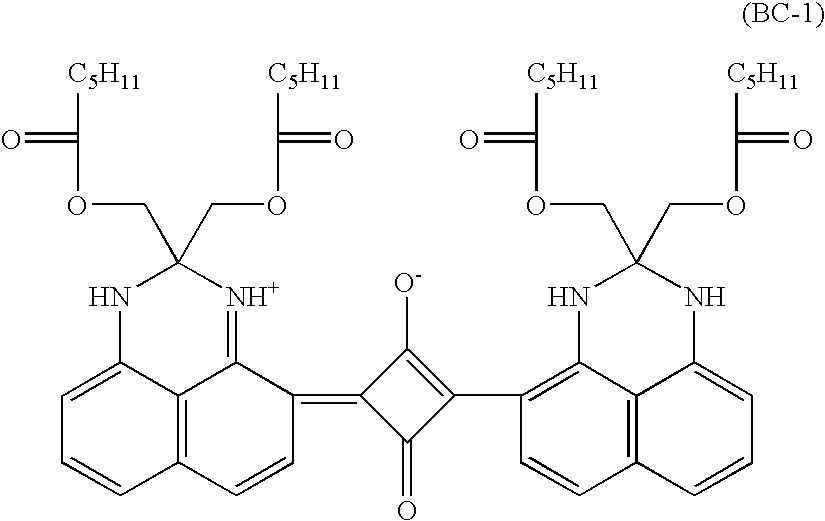Thermally developable materials with buried conductive backside coatings
a backside coating and developable material technology, applied in the field of thermal and photothermographic materials, can solve the problems of distinctly different problems, increased formation of various types of “fog” or other undesirable sensitometric side effects, and much effort in the preparation and manufacture of photo-thermographic materials, and achieve the effect of reducing the manufacturing cost of backside layers and low cos
- Summary
- Abstract
- Description
- Claims
- Application Information
AI Technical Summary
Benefits of technology
Problems solved by technology
Method used
Image
Examples
example 1
[0317] Buried Conductive Backside Layer Formulations:
[0318] Buried conductive backside layer formulations containing zinc antimonate were prepared as described below. In all samples the ratio of CELNAX® CX-Z641M to binder was held constant at 2.73:1 and the ratio of antistatic compound to CELNAX® was varied.
[0319] A dispersion was prepared by adding 33.76 parts of MEK to 15.8 parts of CELNAX® CX-Z641M (containing 60% non-acicular zinc antimonate solids in methanol −9.51 parts net). The addition took place over 15 minutes under strong mixing. Stirring was maintained for an additional 15 minutes.
[0320] A polymer solution was prepared by dissolving 1.38 parts of VITEL® PE-2700B LMW and 2.09 parts of CAB 381-20 in 82.5 parts of MEK. The polymeric binders were selected to provide excellent adhesion between the unprimed polyethylene terephthalate support and the outermost backside layer as described in U.S. Pat. No. 6,689,546 (noted above). The binders do not have any appreciable conducti
PUM
 Login to view more
Login to view more Abstract
Description
Claims
Application Information
 Login to view more
Login to view more - R&D Engineer
- R&D Manager
- IP Professional
- Industry Leading Data Capabilities
- Powerful AI technology
- Patent DNA Extraction
Browse by: Latest US Patents, China's latest patents, Technical Efficacy Thesaurus, Application Domain, Technology Topic.
© 2024 PatSnap. All rights reserved.Legal|Privacy policy|Modern Slavery Act Transparency Statement|Sitemap


